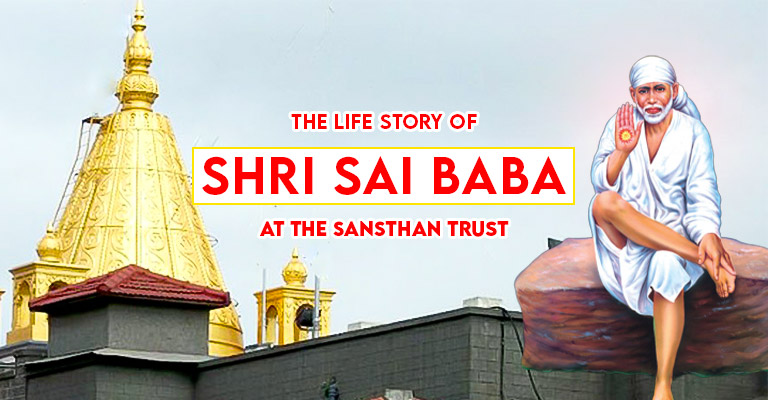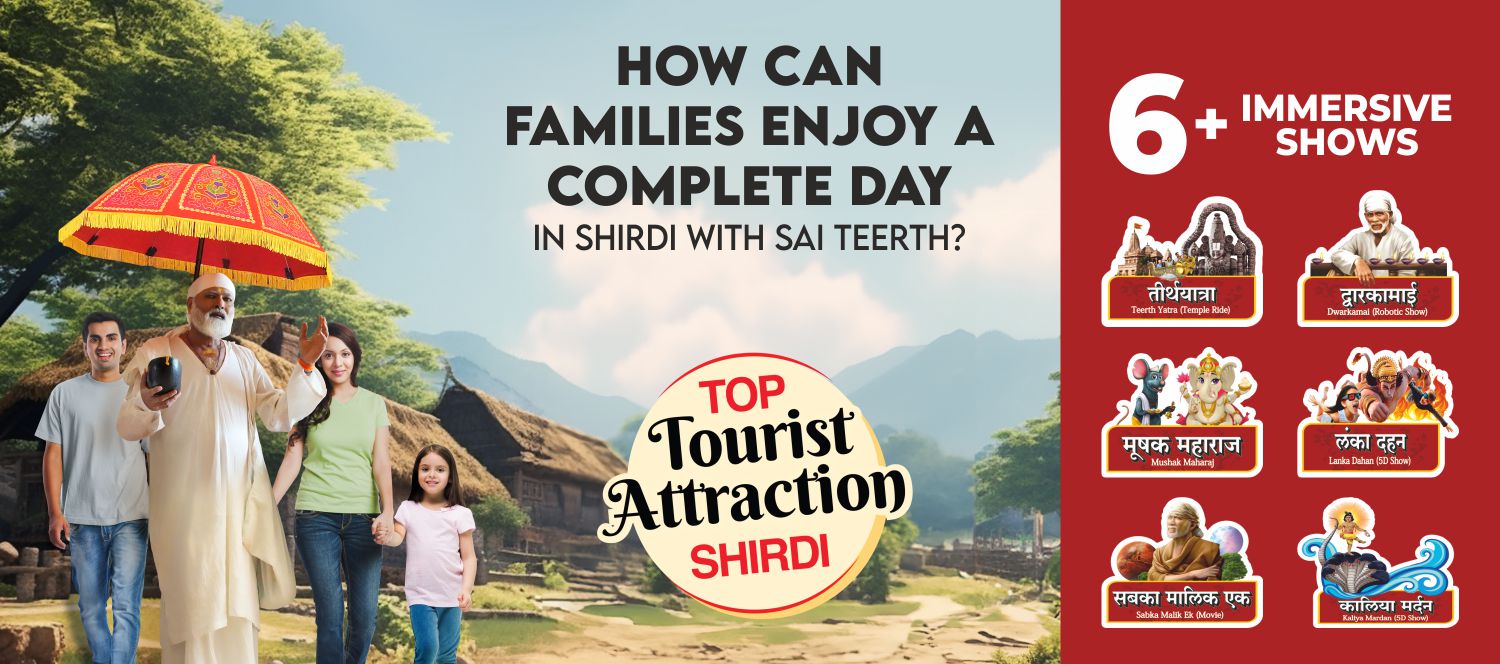Arrival in Shirdi
- In the mid-18th century, a young man arrived in Shirdi, a small village in Maharashtra, India.
- No one knew his origins, background, or name.
- He stayed in a mosque, which he called “Dwarkamai,” and lived a simple, quiet life.
The Name Sai Baba
- The name ‘Sai’ was given to him by the villagers when he first came to Shirdi.
- He earned the title “Baba” out of love and respect for his kindness, compassion, and miraculous abilities.
Sai Baba’s Message
- Sai Baba treated everyone equally, regardless of caste, religion, or background.
- His teachings focused on Shraddha (faith) and Saburi (patience).
- He believed in unity and emphasized that humanity is the greatest religion.
Miracles of Sai Baba
- He performed many miracles that touched people’s hearts and lives:
- Restored the eyesight of a blind man.
- Lit lamps with water when there was no oil.
- Helped the poor, healed the sick, and resolved people’s problems through his divine powers.
- His famous words were: “Why fear when I am here?”
Life in Shirdi
- Sai Baba lived a simple life, wearing a kafni (long robe) and staying among villagers.
- He shared spiritual teachings and values, encouraging harmony among all religions.
- He fed the needy, cared for animals, and welcomed everyone who approached him.
Sai Baba’s Samadhi
- Shri Sai Baba took his last breath on October 15, 1918, at Dwarkamai.
- His body was laid to rest in the Samadhi Mandir (Butti Wada), a structure built by his devotee Gopalrao Butti.
- The Samadhi Mandir is now a sacred place where millions of devotees come to seek blessings.
Formation of Shri Sai Baba Sansthan Trust
- In 1921, a committee was formed to manage the affairs of Sai Baba’s shrine and activities in Shirdi.
- The trust ensures proper worship, maintenance, and administration of Sai Baba’s Samadhi Mandir.
- In 2004, the Shri Sai Baba Sansthan Trust Act was enacted for better management and welfare of devotees.
Teachings and Legacy
- Sai Baba’s teachings promoted love, kindness, and humanity as the ultimate religion.
- He taught the importance of faith, patience, and helping others selflessly.
- His followers believe that visiting Shirdi brings peace, happiness, and prosperity.
Centenary Celebrations
- The centenary of Sai Baba’s Mahasamadhi was celebrated from October 1, 2017, to October 18, 2018.
- Programs were organized across India to honor his life, teachings, and miracles.
- A procession carrying Baba’s footwear traveled across several cities, uniting devotees from all walks of life.
Experience Sai Baba’s Life at Sai Teerth Devotional Theme Park
- At Sai Teerth in Shirdi, devotees can witness Sai Baba’s life, miracles, and teachings through a unique film titled “Sabka Malik Ek.”
- This devotional film inspires love, kindness, and spirituality, touching the hearts of all visitors.
- It is an unforgettable way to connect with Sai Baba’s timeless message of peace and unity.
- Visit Sai Teerth Devotional Theme Park in Shirdi and experience the divine story of Shri Sai Baba, a figure who continues to guide millions of devotees through his blessings and teachings.










